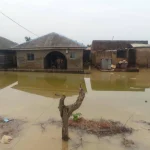In order to address the vulnerabilities of adolescents and young Nigerians, stakeholders have urged for the deployment of creative and long-lasting interventions.
They made the request on Thursday during the Centre for Integrated Health Programs’ fourth scientific roundtable series, “The Missing Link: Reducing Vulnerabilities of Adolescents and Young Persons through Sustainable Interventions,” which was held in Abuja.
They claimed that a number of health issues affect Nigerian youth and adolescents, such as the country’s high rate of HIV and other infectious diseases, growing worries about substance abuse and mental health, and unmet needs for reproductive health.
Speaking, Dr. Bolanle Oyeledun, the Chief Executive Officer of CIHP, stated that although youth make up the majority of the population, there are no youth-focused interventions, or those that do exist are either not strategically designed or do not take into account the diverse range of characteristics that youth possess.
She said, “We know we have young people who are in school, who are out-of-school, young people who are in rural areas, young people who are in urban areas facing the dilemma and the challenges of urban areas. We have young people who are married, who have been married at very early ages, which should not have happened.
“We have young people who face vulnerabilities from infections, especially HIV/AIDS, and sexually transmitted infections, who do not have even any information or skills in terms of their sexual and reproductive health and rights.
“We have young people who are economically deprived, so there are so many multiple vulnerabilities that are intersecting and affecting them. So the question is, are we doing enough in terms of identifying these different vulnerabilities? Are we doing enough in terms of programming to reach them, or are we just paying tokenism to the work that we do? So this is really about calling attention to this again, for us to come back, to centre around and say, if we’re going to change things positively to help young people achieve what they want in life. We need to put them at the centre, understanding their needs, rather than being prescriptive in the things we do with and for them.”
In order to address the vulnerabilities of adolescents and young people, she stressed that all hands need to be on deck.
“Before we come in as government, before we come in as stakeholders, we come with a title. We’re either parents, caregivers, or relatives. So, we have a collective responsibility to look at how to empower the young person so that he or she can stand very well in society. We need to make sure that our policies come to life,” she added.
Dr. Oluwafunke Ilesanmi-Odunlade, the World Health Organization’s HIV/AIDS focal person, stated that in order for adolescents and young people to succeed, policies intended for them must be put into place.
“Translating policies to actions is not a half-baked goal. It has to be from within, from the people who need it, from the people who need the experiences, and after we put out the action, we should monitor the change.
“The world is dynamic, and there is a need for our actions also to be dynamic. We should have those programmes targeted at the different population groups or the different demographics, and address them right when they are young, and I think we will be able to make a lot of difference.”
Additionally, Dr. Olujuwon Ibiloye, Senior Technical Officer and Paediatric ART Lead at APIN Public Health Initiatives, emphasised the importance of a methodical approach to address the vulnerabilities of the nation’s youth.
He said, “There are different factors that are influencing the health outcomes among adolescent girls and young women, and at the same time, when you look at technology as a tool to improve health outcomes among young people, you can also look at it from two angles, getting them involved in STEM education and STEM employment. You can also look at it from the programmatic angle, interventions, using technology, and interventions to improve health outcomes.
“So, from a policy angle, it starts from the agenda setting and the inclusion of all stakeholders identifying the issues and co-creating the solutions such that when the policy is eventually to be effective, there is ownership and there is commitment.
“And if young people are there to also speak their minds, to tell us specifically what they want, the change they need to see, I believe that when the policy is out, people will buy into it and there will be a commitment in terms of finances to fund it.”




